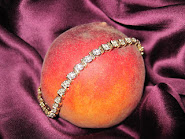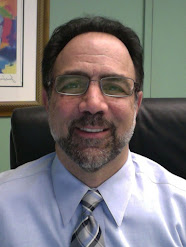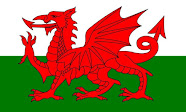#CulturedPeachy @AMNH #PeachysPetPals Impact: The End of the Age of Dinosaurs Opens at AMNH
Opening November 17 at the American Museum of Natural History, Impact: The End of the Age of Dinosaurs explores the major asteroid impact 66 million years ago that reshaped life on Earth. The collision triggered earthquakes, tsunamis, and global wildfires, plunging the planet into darkness and wiping out most species—including the non-bird dinosaurs. From this destruction came renewal: new ecosystems evolved, mammals diversified, and, ultimately, humans emerged.
Featuring life-size models—including an 18-foot-long Triceratops pulling down a small tree, a 27-foot-long mosasaur attacking a plesiosaur, and a 15-foot-tall plant-eating ancient mammal—as well as fossils and fossil casts, dramatic dioramas, an immersive panoramic video experience that visualizes the moment the asteroid struck, and engaging interactives, Impact reveals the latest scientific understanding of this transformative moment. As visitors explore a dramatic story of extinction, survival, recovery, and adaptation spanning millions of years, Impact also presents the evidence for these extraordinary events from the fossil record and Earth’s geology.
“Impact doesn’t just tell the dramatic story about the asteroid strike that wiped out the non-avian dinosaurs, it shows how science enables us to peer into that long-gone time: what the world was like, what animals roamed, and of course, the planet-wide environmental cataclysm that the asteroid triggered,” said Museum President Sean M. Decatur. “It’s also a story about the resilience of life and of our planet. Some species survived, new ecosystems flourished, and eventually these developments led to the evolution of humans and the world we know today. It's a fascinating, extraordinary story like no other.”
The Cretaceous Period ended catastrophically when an asteroid estimated to be 6 to 10 miles wide crashed into Earth on what is now the Yucatán Peninsula, plunging the planet into a global winter. In addition to its most famous victims, the non-avian dinosaurs, the Cretaceous-Paleogene (K-Pg) extinction event eliminated about 75 percent of all living species: all flying reptiles, the pterosaurs, as well as massive marine reptiles including mosasaurs and plesiosaurs, marine invertebrates including ammonites, and many species of mammals, amphibians, birds, insects, and plants. Impact highlights the species that became extinct as well as the plants and animals that survived this major turning point in Earth’s history and faced a drastically changed world. The extinction of non-bird dinosaurs paved the way for the evolution of new flora and fauna, including the emergence of lush rainforests and the explosion of mammal diversity, which ultimately led to our human lineage.
“What makes this exhibition so exciting is how much of the story we can now tell through science,” said Roger Benson, lead curator of the exhibition and the Macaulay Curator of Dinosaur Paleobiology in the Museum’s Division of Paleontology. “Advances in paleontology and geochemistry have given us an unprecedented look at what happened before, during, and after the asteroid hit—including how ecosystems collapsed, adapted, and ultimately flourished again.”
The K-Pg event is the most recent of five major mass extinction events. Some researchers think we’re about to enter another extinction, one caused not by volcanism or an asteroid impact but by human activities, including those that contribute to climate change. Visitors will learn about other extinction events, as well as about the vital ongoing work to sustain Earth’s incredible biodiversity today.
LIFE BEFORE THE IMPACT
On land and in the oceans, Earth was teeming with life during the Cretaceous Period. In ancient oceans, huge marine reptiles ruled for millions of years, existing as part of a complex ecosystem that included tiny organisms such as phytoplankton and zooplankton, along with fishes, sharks, sea turtles, clams, squid, ammonites, nautiluses, and other invertebrates. In Impact, visitors will encounter life-size models of a 27-foot-long mosasaur—among the most fearsome and widespread marine reptiles of the time—attacking a long-necked plesiosaur measuring 30 feet. The exhibition also features a touchable cast of a mosasaur tooth as well as a real fossil of an ammonite—an extinct cephalopod related to squids, octopuses, and nautiluses that came in many shapes and sizes and was common around the world.
On land, visitors will see that the area that now makes up the western United States was a rich, interconnected ecosystem of plants and animals that thrived in forests, meadows, lakes and floodplains. Impact features a stunning diorama that depicts a scene based on fossils from the Hell Creek Formation, an ancient rock layer that dates to the end of the Age of Dinosaurs, including intricate life-size models of a Triceratops and a recently discovered hook-handed dinosaur called Trierarchuncus prairiensis, as well as other members of their ecosystem, including turtles, birds, frogs, and even a predatory mammal—Didelphodon—that might have eaten small dinosaurs and other animals.
Nearly all of the many different groups of mammals that were alive 66 million years ago were smaller than the smallest dinosaur. Most were about the size of a shrew or a rat. Visitors will be able to press a button in this Cretaceous scene to peek inside the burrow of one such tiny mammal, Mesodma, which may have dug underground for protection from predators or other dangers.
Nearby, touchable exhibits include a real fossil of a Triceratops toe bone and a cast of Triceratops skin. An interactive soundboard demonstrates how three ancient animals—a species of large-crested dinosaur, an ancient bird with a voice box similar to those of modern geese and ducks, and a big predatory frog—may have vocalized during the age of dinosaurs. Visitors can also play a digital game that invites you to take a “personality” quiz to find out which Cretaceous-era animal lineage matches your general food preferences, sleeping habits, and other traits. Later in the exhibition, participants discover which lineages persisted after the impact.
THE IMPACT
A 6-minute immersive panoramic video experience visualizes the moment that the asteroid—traveling about 45,000 miles per hour—struck Earth with the force of billions of nuclear weapons, triggering tsunamis, earthquakes, and acid rain, setting off wildfires, and darkening the sky with a blanket of dust, gas, and soot.
An estimated 25 trillion tons of rock was launched into the sky by the impact and, in the days following, fell back to the Earth as hot, melted rock spherules, heating the upper atmosphere to 1,300 degrees F (700 degrees C). For a year and a half, almost no sunlight reached Earth’s surface. Plants died, and, over time, the planet cooled by an estimated 45 degrees F (25 degrees C). With no plants to eat, herbivores starved, as did their predators. Mosasaurs and plesiosaurs, the large predators living in the oceans, died out, as did all dinosaur species except for a few species of the ancestors of today’s birds. About 99.999 percent of all individual animals and plants on Earth died, and about three-fourths of all species became extinct.
Today, most scientists agree that a huge asteroid impact caused the mass extinction 66 million years ago. But it took decades to find the crater and assemble a full picture of the impact from physical evidence. The exhibition highlights what researchers have discovered, including:the boundary layer, a dark band formed during the mass extinction above which no non-bird dinosaurs are found, and which contains high amounts of iridium, an element that is rare on Earth’s surface but found in much higher concentrations in asteroids
the presence of spherules—molten rock that was launched into the sky by the explosion and hardened in the air—up to thousands of miles away from the impact site
“shocked quartz,” which is known to form only at “blast” sites including meteorite impact sites and nuclear detonation zones, observed in sediments dating to 66 million years
drill cores from the crater that tell the story of how the crater formed and was immediately filled back in by debris, and
fossils of animals killed by the fires and floods that followed the asteroid impact
Visitors can see the hundreds of locations where iridium from the asteroid has been found around the Earth on an interactive globe.
LIFE AFTER THE IMPACT
The effects of the impact were chaotic and unprecedented, but certain traits may have given some animals an advantage. Survivors found ways to escape the heat and could eat something other than living plants and animals. Some animals hid underwater or underground during the fires, including turtles, frogs, and small mammals. Fungi do not need sunlight and can get nutrients from soil and dead plants. Bacteria, insects, and other organisms that break down dead plants and animals found plenty to eat.
Some ferns are adapted to survive fires and, because their spores can grow on burned areas, they were the first plants to grow back in large numbers after the impact. A “fern-finity” mirror box in the exhibition helps visitors imagine how Earth looked when almost all of the plants were ferns. New plants, new animals, and entire new ecosystems quickly evolved to take the place of what was lost. Impact visitors can follow a timeline spanning from days after the impact to today and touch a real fossil of an ammonite, one of the marine animals that went extinct after the impact whose close relative, the nautilus, survived to the present.
As plant diversity increased, so did the variety of mammals, insects, birds, and reptiles that ate them. The mass extinction also created an opportunity for a brand-new habitat to emerge: closed-canopy rainforests, composed of tall, spreading trees whose branches merge into an unbroken layer. An interactive exhibit in Impact: The End of the Age of Dinosaurs invites visitors to follow a “recipe for a rainforest”—activating four “ingredients” by pushing buttons: empty land, fertilizer from newly formed legumes, the absence of big dinosaurs that could knock down trees, and a warm, wet climate. This new ecosystem became home to a rich diversity of animals, including one of the largest snakes to ever live, Titanoboa, a top predator in early South American rainforests 58–60 million years ago. A partial life-size model of this monster snake, which could grow more than 40 feet long and weigh up to 1 ton, gives visitors the opportunity to appreciate the scale of its thick tail and large head, which flank an exhibit wall as though the reptile is encircling it.
Mammal diversity also exploded dramatically. In less than 20 million years, new species evolved to live in the air, the ocean and the treetops. And while most mammals remained small, eventually some became giants. Impact features life-size models of the largest and smallest land mammals that ever lived and are now extinct: the plant-eating Paraceratherium, sometimes referred to as Indricotherium, which weighed more than three times as much as an African elephant; and the shrew-like Batodonoides, which weighed less than 1 gram (0.04 oz). Other models include a stunning replica of a “walking whale,” Ambulocetus natans, a four-legged mammal related to hippos that could both swim and walk. Over time, the descendants of the group to which Ambulocetus belonged became fully adapted to life in the sea.
PROTECTING EARTH
Many meteorites land on Earth each year, but most land unnoticed and are small enough to hold in your hand. Giant impacts are extremely rare, and there is little chance that our planet will be hit by an asteroid big enough to cause a mass extinction in the next several million years.
Still, scientists are studying potential impactors and developing ways to deflect them. A digital interactive in the exhibition introduces visitors to the sophisticated tools used to track near-Earth objects today and allows “testing” of deflection technologies that may help prevent another asteroid impact:striking and redirecting the asteroid with a spacecraft, recently demonstrated with NASA’s Double Asteroid Redirection Test (DART) mission
using lasers to heat a small spot on the asteroid’s surface until it vaporizes, causing the path of the asteroid to change
stationing a large spacecraft near an asteroid to pull it off course through gravitational attraction, and, as a last resort,
blowing up the asteroid with a nuclear bomb
The end of the Age of Dinosaurs was not the only—or even the worst—extinction event in Earth’s history. There were at least four other mass extinctions that happened earlier. Each time a new, transformed world evolved in place of what was lost.
Today, more species are alive than at any other time in Earth’s history. But we burn fossil fuels that release the same greenhouse gases into the atmosphere that led to both the Permian and Triassic mass extinctions, events that killed off 95 percent and 80 percent of all species, respectively. Lowering these emissions is an essential step in reducing the future impacts of rapid climate change, including possible future mass extinctions. Climate change, along with overexploitation, pollution, invasive species, and habitat loss, threatens species and ecosystems around the world. Six video stories at the conclusion of Impact: The End of the Age of Dinosaurs explore the many ways that conservation action can protect against ongoing biodiversity loss, including controlling introduced species, protecting habitats, and regulating industry. At the end of the exhibit, visitors encounter a striking layered collage by artist Clare Celeste Börsch, called “Web of Life,” that celebrates the beauty and diversity of life on Earth while acknowledging the urgent reality of species loss.
EXHIBITION ORGANIZATION
Impact: The End of the Age of Dinosaurs was curated by five Museum scientists whose combined expertise creates a robust and interdisciplinary narrative of this momentous event. Leading this effort is the Museum’s Macaulay Curator of Dinosaur Paleobiology Roger Benson, the curator-in-charge of fossil amphibians, reptiles, and birds and fossil plants. Other curators include the late Mark Norell, former curator emeritus in the Division of Paleontology whose work generated new ideas about bird origins; Michael Novacek, curator in the Division of Paleontology whose research focuses on mammals; Neil Landman, curator emeritus in the Division of Paleontology who specializes in invertebrate fossils; and Denton Ebel, curator and meteorite specialist in the Division of Physical Sciences. Ana Luz Porzecanski, director of the Museum’s Center for Biodiversity and Conservation, is a consultant for the exhibition.
The exhibition is designed and produced by the American Museum of Natural History’s award-winning Exhibition Department under the direction of Lauri Halderman, senior vice president for exhibition.
Impact: The End of the Age of Dinosaurs will open to the public on Monday, November 17, 2025. Museum Members will be able to preview the exhibition starting on Friday, November 14, through Sunday, November 16.
The Museum dedicates Impact: The End of the Age of Dinosaurs to the memory of our dear colleague Mark Norell, a world-renowned paleontologist, educator, inaugural Macaulay Curator in the Museum’s Division of Paleontology, and curator of many Museum exhibitions, including this one.
The Museum gratefully acknowledges the Richard and Karen LeFrak Exhibition and Education Fund.
Generously sponsored by J. and G. Jacobson and family.
***
Note from the Editor: Obviously, Peachy was not alive at the same time as the dinosaurs so technically they could not be a pet pal potentially. However, if they were alive today they would be.





































































































